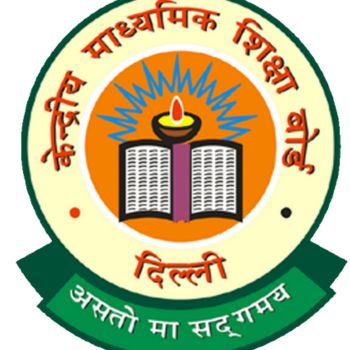M.Sc in Visual Communication is a 2-year, postgraduate program that combines creative expression with technical knowledge, allowing students to explore various forms of visual storytelling. It focuses on developing strong visual literacy and communication strategies to effectively convey ideas across diverse media platforms, including graphic design, photography, animation, video production, multimedia, and digital media.
The candidates should possess a degree with at least 50% marks from a recognised university institution, or an equivalent qualification from a recognised university institution and valid scores in UCEED, CUET PG, NID Entrance, NIFT Entrance, CEED, along with a personal interview or a written test may be part of the selection process.
Popular M.Sc Visual Communication colleges include the National Institute of Design (NID), Indian Institute of Art and Design (IIAD), Symbiosis Institute of Design (SID), Shristi Manipal Institute of Art, Design and Technology Bengaluru, Charya School of Design Bengaluru, Loyola College Chennai, Madras Christian College Chennai, SRM Institute of Science and Technology, S.A. College of Arts & Science, Hindusthan College of Arts and Science, Bharat University, VIT Vellore. The course fee varies, ranging between INR 60,000- INR 11,00,000 based on the college or university.
Graduated with an M.Sc in Sustainable Development, can work as a multidisciplinary professional with expertise in Web development, Instructional design, Lecturer, Graphic artists, Digital photographers, Business development manager and Professors. In organisations such as TCS, Infosys, Wipro, HCL Technologies, Tech Mahindra, Accenture, IBM, Capgemini, Zoho, Cognizant, Amazon, Google, Flipkart, Freshworks, and ThoughtWorks. Other companies include Amazon India, Flipkart, Nikon India, Canon India, Conde Nast, Times of India, Hindustan Times, NDTV, photo studios, advertising agencies, and freelance work. Companies like Deloitte, Ernst & Young (EY), KPMG, PwC, Amazon, Google, Byju's, Zomato, Swiggy, Salesforce, Razorpay, Infosys, HCL, and Tech Mahindra. The salary ranges between INR 2 LPA to INR 12 LPA.
Table of Contents
- M.Sc Visual Communication Highlights
- What is an M.Sc Visual Communication?
- Why study M.Sc Visual Communication?
- Who should study M.Sc Visual Communication?
- M.Sc Visual Communication Eligibility Criteria
- M.Sc Visual Communication Entrance Exams
- M.Sc Visual Communication Colleges in India
- M.Sc Visual Communication Admission Process 2025
- M.Sc Visual Communication Syllabus
- Course Comparison between M.Sc Visual Communication and MA in Media and Communication
- M.Sc Visual Communication Job Opportunities in India
- M.Sc Visual Communication FAQs
M.Sc Visual Communication Highlights
The details for the M.Sc Visual Communication are listed below:
What is an M.Sc Visual Communication?
M.Sc in Visual Communication is a postgraduate program that combines creative expression with technical knowledge in visual media, design, and communication. It offers students the opportunity to explore various forms of visual storytelling, including graphic design, photography, animation, video production, multimedia, and digital media.
The two-year course equips students with theoretical frameworks and practical skills for careers in media, advertising, branding, journalism, or digital marketing. It covers areas like media aesthetics, semiotics, visual culture, communication theories, UX/UI, and production technologies. Graduates are skilled communicators capable of creating impactful visual content that engages, informs, and influences audiences.
Why study M.Sc Visual Communication?
Studying for an M.Sc in Visual Communication is a rewarding endeavour for those passionate about science and discovery, offering numerous compelling reasons to pursue this field.
- An M.Sc in Visual Communication is a program that combines creativity with strategic communication in a visual-dominated world.
- This program equips students with the skills to become effective storytellers using design, media, and digital technologies.
- The demand for skilled visual communicators is increasing across various industries, making this course a competitive and dynamic option.
- The program provides in-depth knowledge of visual theory, media ethics, digital tools, and design software, while encouraging innovation and critical thinking.
- Students gain hands-on experience in crafting brand identities, designing interfaces, producing short films, and developing multimedia campaigns.
- The course also cultivates soft skills like teamwork, communication, and problem-solving, and opens avenues for research, teaching, and creative entrepreneurship.
- This course is ideal for those who want to influence perceptions, drive narratives, and build careers at the intersection of art, technology, and communication.
Who should study M.Sc Visual Communication?
An M.Sc in Visual Communication is suitable for people with a strong interest in life sciences and a desire to contribute to conducting research and innovation. The best match candidates that will fit this program are given below:
- The M.Sc Visual Communication program is designed for students with a passion for creativity, design, and media who want to use visual storytelling to communicate ideas and influence audiences.
- This course is ideal for those who have completed undergraduate studies in fields like visual arts, mass communication, media studies, graphic design, or computer applications.
- It is suitable for those who enjoy working with digital tools and technologies like animation, video editing, photography, and graphic design software, and who want to build a professional career in industries like advertising, branding, film and television, digital marketing, journalism, or user interface design.
- The program also appeals to creative thinkers interested in understanding the psychology behind visual perception, media ethics, and cultural impact.
M.Sc Visual Communication Eligibility Criteria
Given below are the M.Sc Visual Communication eligibility criteria:
- Candidates must have a degree with at least 50% marks from a recognised university institution, or an equivalent qualification.
- Candidates must have at least one year of work experience.
- Candidates with professional degrees are also eligible at many institutes, provided they have good academic records.
- A valid national-level fellowship or entrance exam qualification is usually required, such as CUET PG, BITSAT, NEST, IIT JAM, and TISS NET or equivalent.
- Some institutes may consider candidates without a fellowship, but preference is given to those with national-level scholarships.
- Additional requirements, such as a personal interview or written test, may be part of the selection process.
- Candidates belonging to the SC/ST category are entitled to a 5% relaxation in aggregate marks.
M.Sc Visual Communication Entrance Exams
Given below is the M.Sc Visual Communication entrance exam, along with the application date and application fees.
M.Sc Visual Communication Colleges in India
Given below are the top M.Sc Visual Communication colleges in India.
M.Sc Visual Communication Admission Process 2025
M.Sc Visual Communication can be accessed through either the entrance examination mode or direct admission through quota. The admission process at VIT Vellore is mentioned below:
Step 1: Visit the VIT Vellore admissions official site and choose the M.Sc Visual Communication.
Step 2: Fill in the online application form with all the necessary details, upload scanned images of your photograph and signature, and pay the application fee online.
Step 3: Choose your admission mode: With a valid BITSAT, UCEED, NID, NIFT and CUET PG Score.
Step 4: Complete the application and print it out for your records.
Step 5: Appear for the BITSAT, UCEED, NID, NIFT and CUET PG scores are both valid and received.
Step 6: Wait for the release of merit lists: Each BITSAT, UCEED, NID, NIFT and CUET PG participant has a separate merit list prepared by VIT Vellore.
Step 7: If shortlisted, go to the official site to see whether you have been selected, and follow the process for admission confirmation.
Step 8: Confirm your seat by paying the admission fee.
Step 9: Complete the document verification as per the institute's requirements.
Step 10: Now, receive the details regarding the commencement of classes after completing the formalities.
Documentation Required:
- 10th and 12th mark sheets.
- Graduation Marksheets
- Aadhar Card
- PAN Card
- Migration certificate
- Character certificate
- School Leaving Certificate
- Passport-size photographs
- Signature.
- Caste Certificate (If any)
- Income proof
M.Sc Visual Communication Syllabus
An M.Sc Visual Communication program combines classes and research work, with research and thesis preparation being the primary focus. The syllabus varies based on the chosen specialisation, with candidates having the option to choose specific research areas from a table. Given below is the M.Sc Sustainability Development syllabus from Christ University:
Read more about MA in Mass Communication and Journalism
Course Comparison between M.Sc Visual Communication and MA in Media and Communication
Given below is a course comparison between the MSc in Visual Communication and the MA in Communication
M.Sc Visual Communication Job Opportunities in India
Given below are the job opportunities one can pursue after an M.Sc in Sustainable Development.
Looking for Management roles? Check MBA in Communications Management
M.Sc Visual Communication FAQs
What are the M.Sc Visual Communication specialisations?
M.Sc Visual Communication offers a variety of specialisations for students to specialise in specific areas of media and design. These include Graphic Design, Animation and Motion Graphics, Photography and Cinematography, Advertising and Media Planning, UI/UX Design, and Film and Television Production. These specialisations allow students to develop niche skills that align with their career goals and industry trends, making them versatile professionals in the evolving world of visual communication. Students can learn to create impactful visual content using typography, layout, branding principles, and animation and motion graphics. Additionally, they can learn camera techniques, lighting, and post-production.
Who should opt for M.Sc Visual Communication?
Graduates pursuing this course should have an innovative mind, an interest in virtual reality, an understanding of information-communication through visual displays, the ability to interpret body language, effective visualisation, good drawing skills, and reasonable proficiency in visual media-based technologies.
What are a few tips to prepare for an M.Sc Visual Communication entrance exam?
To prepare for an M.Sc Visual Communication entrance exam, one must possess creative thinking, visual awareness, and theoretical knowledge of media and communication. Understanding the syllabus and exam pattern of the university or institution is crucial, as many entrance exams assess aptitude in areas like visual perception, logical reasoning, general media awareness, drawing skills, and communication theories. Practice basic sketching, storyboarding, and design principles, read books on visual communication, media studies, and semiotics, stay updated on media trends, and manage time effectively by taking mock tests and solving previous years' papers. Prepare a well-organised collection of creative work for portfolio reviews or interviews, and be confident and clear about your motivation to pursue this field.
What skills are essential, and how are they developed during the M.Sc Visual Communication Program?
Visual communication professionals need a combination of creative, technical, analytical, and communication skills to thrive in the media and design industry. Key skills include visual storytelling, graphic design, typography, colour theory, photography, video production, and animation. They also need critical thinking, media literacy, research skills, and a strong understanding of communication strategies and audience psychology. The M.Sc Visual Communication program nurtures these skills through a blend of theory, hands-on practice, and project-based learning. Students participate in design studios, media labs, and production workshops, while courses in communication theory, media ethics, and visual culture enhance their understanding. Tools like Adobe Creative Suite, 3D design software, and video editing platforms are introduced to enhance technical proficiency.
How to get admission to a good M.Sc Visual Communication college?
To gain admission to a reputable M.Sc Visual Communication college, candidates must meet eligibility criteria, prepare for entrance exams, and build a strong creative portfolio. Most institutions require a bachelor's degree in Visual Communication, Media Studies, Fine Arts, Mass Communication, or a related field. Entrance exams assess creative aptitude, visual awareness, general knowledge, reasoning abilities, drawing tests, design tasks, or media analysis exercises. Preparation includes practising design basics, sketching, media theory, and staying updated with visual communication and digital media trends. Research colleges, understand their selection process, and apply early.
What is the future scope of M.Sc Visual Communication?
The M.Sc Visual Communication program offers a promising future in the field, as the demand for skilled visual storytellers continues to grow across various industries. Graduates can pursue careers in graphic design, UI/UX design, art direction, animation, video editing, photography, advertising strategists, and digital content creators. New-age sectors like VR, AR, social media marketing, and interactive media are also creating exciting job opportunities. Freelancing, entrepreneurship, and working with startups or global brands are also possible. Those interested in academics can opt for Ph.D. programs or teaching positions in media and design institutions. As visual content becomes a core tool for communication in business, healthcare, education, and politics, the relevance of this field is set to increase.











